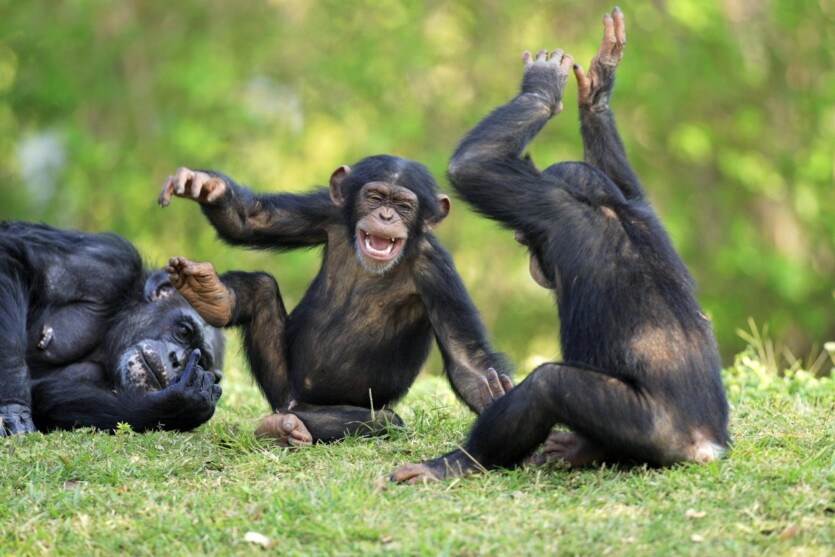
Researchers from The Max Planck Institute for Evolutionary Anthropology has discovered that wild chimpanzees in the national park The Tai in Côte d’Ivoire communicate with each other using some language structures, similar to human speech.
According to the author of the study Cédric Girard-Butto, the results of a study he and his colleagues conducted may indicate that the roots of our ability to communicate in complex language may be much deeper, than thought, and may stem from a common ancestor with our ape relatives. Chimpanzees, like other primates, are use different sounds to communicate with each other, warning of danger, grunting while feeding, and calling out to rally others when necessary.
Until now, however, scientists have believed that combining sounds into words and words into meaningful sentences is a human ability. Linguistic rules determine how the meaning of individual words will change in different sentence structures. Primate communication was considered too limited to be a precursor to complex, combinatorial human language.
As part of the study, scientists from for years, the Max Planck Institute for Evolutionary Anthropology has been recording thousands of calls from three groups of wild chimpanzees. The researchers were trying to determine how 12 types of different sounds made by chimpanzees changed when the apes combined and combined them with each other. In total, the scientists recorded 4,233 sound signals, of which 734 — were combinations of two calls.
The researchers paid attention not only to on the signals themselves, but also on the situations in which the chimpanzees called them out. Some calls were related to feeding, others to resting, moving, greeting, playfulness, aggression, or were reactions to the appearance of other animals.
By comparing the meanings of individual and paired calls, the scientists determined how the content of the voice signal changes when calls are combined. They used mathematical analysis to assess how similar the distribution of events is for single and paired sounds.
The analysis revealed four main ways in which chimpanzees changed meaning by combining single sounds into 16 different pairs. These ways were similar to the key linguistic principles of human language.
For example, in monkeys, the interjection «hoo» means «feeding», and the interjection «pant» is used to emphasize social affiliation. However, in combination, these calls signify home improvement. At the same time, the interjection «pant hoo became more specific if it was followed by a shout, hinting at a possible danger or urgency.
Grunting, used during feeding, and «hoo», used during rest, together indicated feeding during rest. Chimpanzees seem to respond differently to the order of sounds. A «grunt-hoo» didn’t mean the same thing as a «hoo-grunt».
«The creation of new or combined meanings by combining words is a distinctive feature of human language. It is crucial to investigate whether our closest living relatives, chimpanzees and bonobos, have this ability», — explains the study’s co-author Catherine Crockford.
According to researchers, the common ancestor of apes and humans existed about 6-8 million years ago. If the skills of combining individual sounds existed even then, it would mean that the difference between the language of humans and primates is not as great as previously thought.
The results of the study were published in the journal Science Advances

Spelling error report
The following text will be sent to our editors: